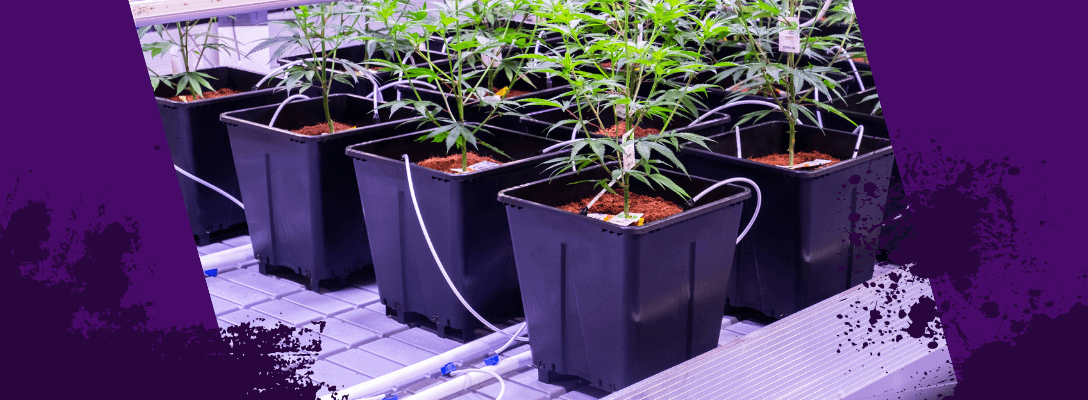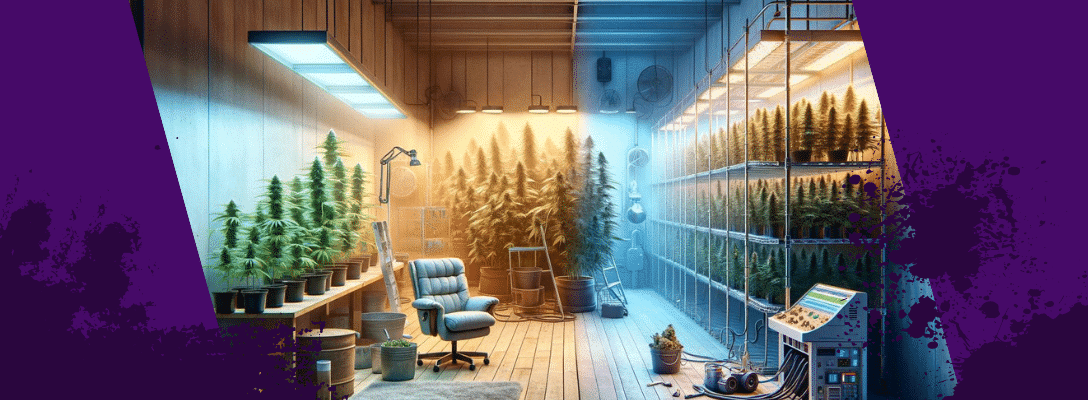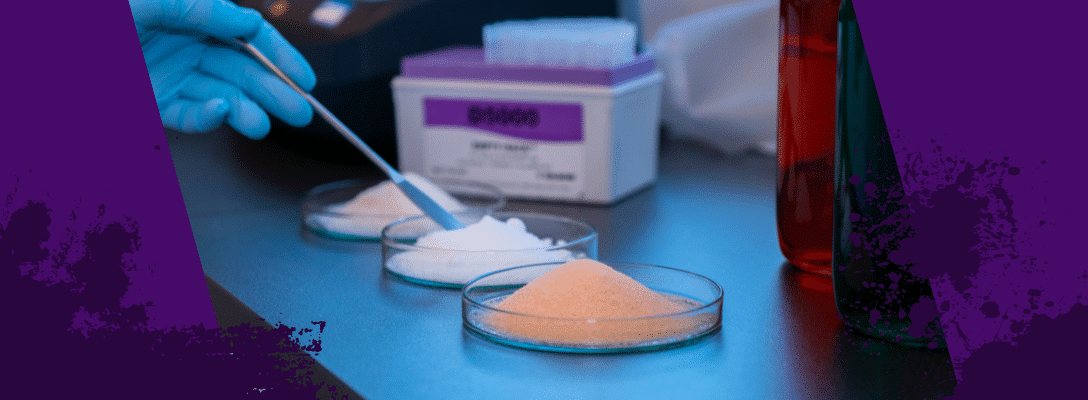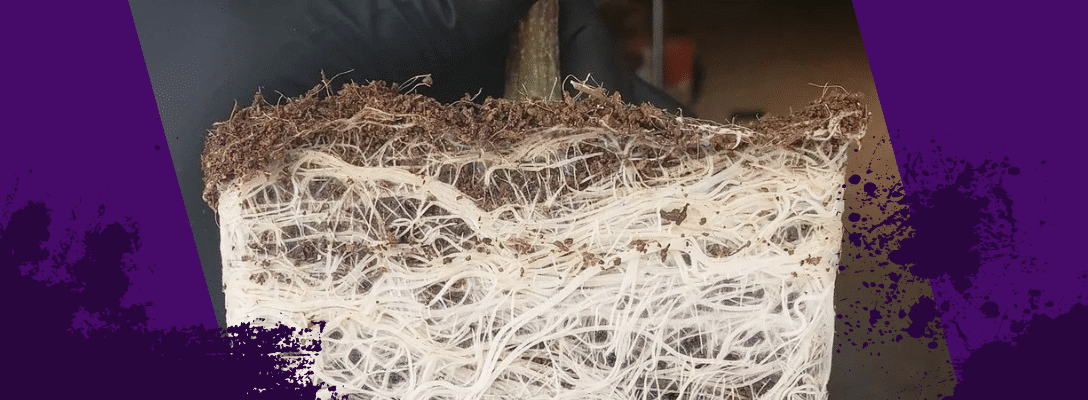Not sure how to start growing your own plants? Your first time growing may feel difficult, but it should be such an exciting experience! Growing your own plants can be easy if you know how they work and understand their needs. If you’ve got questions like:
- What are the essentials for growing?
- Are there specific additives or
nutrients you need? - What do I need to start my grow process?
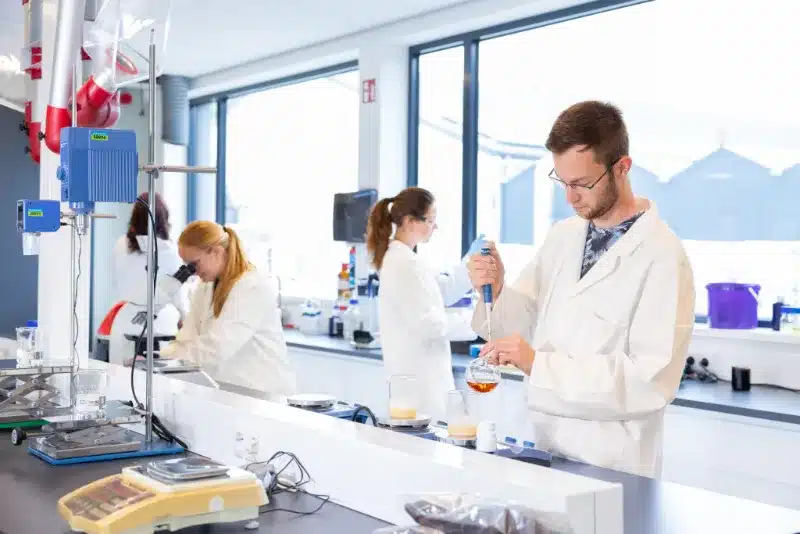
We’ve got the answers!
Here at Plagron, our goal is to empower growers to achieve legendary results. Our team has compiled a list of areas to help you get a start on your first grow correctly.
- Research & planning
- Growing space
- Selecting suitable soil
- Nutrients & fertilizer
- pH testing kit
- Pest & disease management
- Observation & record keeping
RESEARCH & PLANNING
Research and planning can be crucial steps in becoming a successful plant grower or gardener. It helps you understand the specific needs of your operation. Some things to keep in mind are knowing about the plants’ growth cycles, nutrient requirements and potential pests or diseases. Did you know, your plants should have small amounts of movement so all of the plant’s energy is focused on growing healthy? Any question you have should be researched and your plant’s growth cycle should be planned out.
During the planning phase you will want to assess your available resources. This will include what space you have available, the budget you have allocated, and time commitments to your end. Evaluating your resources will help determine the scale and scope of your cultivation plan. It is important to consider factors like light exposure, temperature, humidity, and ventilation as these environmental conditions significantly impact plant growth.
Ideal Temperature Range:
- Cool-season crops (e.g., lettuce, spinach): 60°F to 70°F (15°C to 21°C)
- Warm-season crops (e.g., tomatoes, peppers): 70°F to 85°F (21°C to 29°C)
- Tropical plants (e.g., orchids, tropical foliage): 70°F to 80°F (21°C to 27°C)
It will not come as a surprise that your plants need the right temperature to grow. These ideal temperature and humidity levels can range depending on the specific plant species you’re working with. To learn more about how temperature affects plant growth in grow rooms, we have some great resources on our website.
Ideal Humidity Range:
- Low humidity: Many plants from arid regions prefer lower humidity levels. Aim for humidity levels between 30% and 50%.
- Moderate humidity: Most common houseplants and garden vegetables thrive in moderate humidity levels. Aim for humidity levels between 40% and 60%.
- High humidity: Tropical plants and certain orchids require higher humidity levels. Aim for humidity levels between 50% and 70%.
Remember, plant cultivation requires attention to detail and patience. Continuously adapt and learn from your experiences to optimize your growth and develop beautiful, bountiful plants.
GROWING SPACE
When it comes to selecting your grow space, whether it’s indoors or outdoors, novice growers should carefully designate a suitable area for their plants. The key lies in effectively organizing your available space, regardless of the type of growing environment.

Indoor growing involves identifying a dedicated space to accommodate your desired number of plants and the necessary indoor equipment. You’ll want to identify the access to electrical outlets, ventilation options, and available floor or shelf space. Enough space for plant containers or grow beds is essential for unrestricted growth. Additionally, the plants must have enough headroom to reach their full height, which is necessary for proper airflow and spacing between each plant. Here are more resources on the basic needs for growing indoor plants.
Outdoor growing also requires an ideal growing area. Beginners should assess their available outdoor garden space, considering sunlight exposure, soil quality, and water sources. To learn more about growing outdoors, head to our blog: Growing outdoors: When to get started?
Planning and allocating your growing area thoughtfully is a fundamental step that sets the foundation for successful cultivation, regardless of your experience level.
SELECTING SUITABLE SOIL
Choosing the right type of soil is a critical step for any beginner grower as it significantly influences the health and productivity of your plants. An optimal soil mix must strike the right balance between drainage and moisture retention, ensuring that the roots can access oxygen while avoiding waterlogged conditions, which can be detrimental to plant growth. Understanding the nutrient content of the soil you intend to use is important as well and directly relates to selecting the right kind of soil.
Beginner growers should look for soil rich in organic matter and nutrients. Organic matter is a major contributor to soil health and is easier to use due to a higher amount of bacteria that helps break down organic residue. This frees up nutrients like carbon and nitrogen that your living plants can use to grow. Soil rich in organic matter improves the soil structure, provides essential nutrients, and promotes beneficial microbial activity. In some cases, using organic matter can reduce the time spent on measuring pH or electrical conductivity (EC) required for a successful plant.
Not only is selecting suitable soil important for beginner growers, but establishing a proper feeding and irrigation schedule is essential for the health and growth of your plants as a beginner grower.
Check out Plagron’s substrate options, now available in the US!
NUTRIENTS & FERTILIZER
Each plant has unique nutritional needs; providing the right balance of essential elements is vital for their growth and development.
The primary macronutrients that plants require are: nitrogen (N), phosphorus (P), and potassium (K). The NPK ratio on fertilizer labels represents the macronutrients to help indicate the correct percentage for each nutrient present. Learn more about the NPK ratio in our basic definitions you need to know blog.

To ensure proper nutrient supply, beginner growers should follow fertilizer application guidelines from reputable sources or consult experts in the field. It is essential to avoid over-fertilization, as excessive nutrient levels can harm plants or contribute to environmental pollution. Grow your knowledge by reviewing our grow schedules to follow Plagron’s fertilizer application guidelines. We offer a variety of base nutrients and additives for each step of the growing process. Find one that is right for your plant growth needs!
PH TESTING KIT
When growing a pH testing kit is essential in any grower’s tool bag. pH, which stands for “potential of hydrogen,” is a measure of the acidity or alkalinity of a solution. Maintaining the proper soil pH range is crucial for optimal nutrient uptake by plants.
The ideal soil pH range for beginner growers depends on the specific plants you are growing, as different plants have different pH preferences. However, most plants generally prefer a slightly acidic to neutral soil pH range of around 6.0 to 7.0.
You may be asking how do you adjust the soil pH range?
- To lower the soil pH: Add organic matter, such as compost or peat moss, and amendments like sulfur or acidic fertilizers.
- To raise the soil pH: Add lime or other alkaline amendments to the soil.
It’s important to make gradual adjustments to pH over time, allowing the plants to acclimate to the changes. Regularly monitor the pH of your soil using a pH testing kit to ensure it remains within the desired range for optimal plant health and growth.
PEST & DISEASE MANAGEMENT
To protect your plants, you should have some knowledge about common pests and plant diseases. Having this knowledge helps you take action to control pests effectively. By understanding the signs, symptoms, and life cycles of pests and diseases, you can catch problems early and deal with them promptly.
Plants can be harmed by various pests like aphids, mites, caterpillars, and whiteflies. Diseases like powdery mildew, leaf spot, and root rot can also cause a lot of damage. Regularly checking your plants for signs of pests or diseases, like looking at leaves, stems, and the soil, helps you find issues before they get worse. This way, you can stop problems from spreading and harming your plants. To learn more about common plant pests and disease management, take a look at the grow topics available on our website.
OBSERVATION & RECORD KEEPING
By closely monitoring your plants, beginner growers can promptly identify and address issues, ensuring their crop stays healthy and grows to their greatest potential. Observation should include visual inspection of leaves, stems, flowers, and overall plant appearance. Be on the lookout for wilting, yellowing, spots, or any unusual growth patterns.
Maintaining a growers’ diary will help record and observe your plant care effectively. This is an invaluable tool that allows you to track and monitor your plant care practices with precision. Utilizing this diary can:
- Help identify patterns
- Keep track of hours of light
- Temperature minimum and maximum
- Advise temperature meter
- Water volume
- Provides a reference for future learning.
As you first get started this is the perfect opportunity to test and change one thing every grow so you can track what has been helping or hurting you.
TAKEAWAY
Whether you’re interested in cultivating plants indoors or venturing into the great outdoors, having an essential growers checklist can help set you up for success. The information above will help ensure you have the knowledge to start as a beginner grower. If you are interested in learning more or need help with starting your growing process, talk to our experts.


